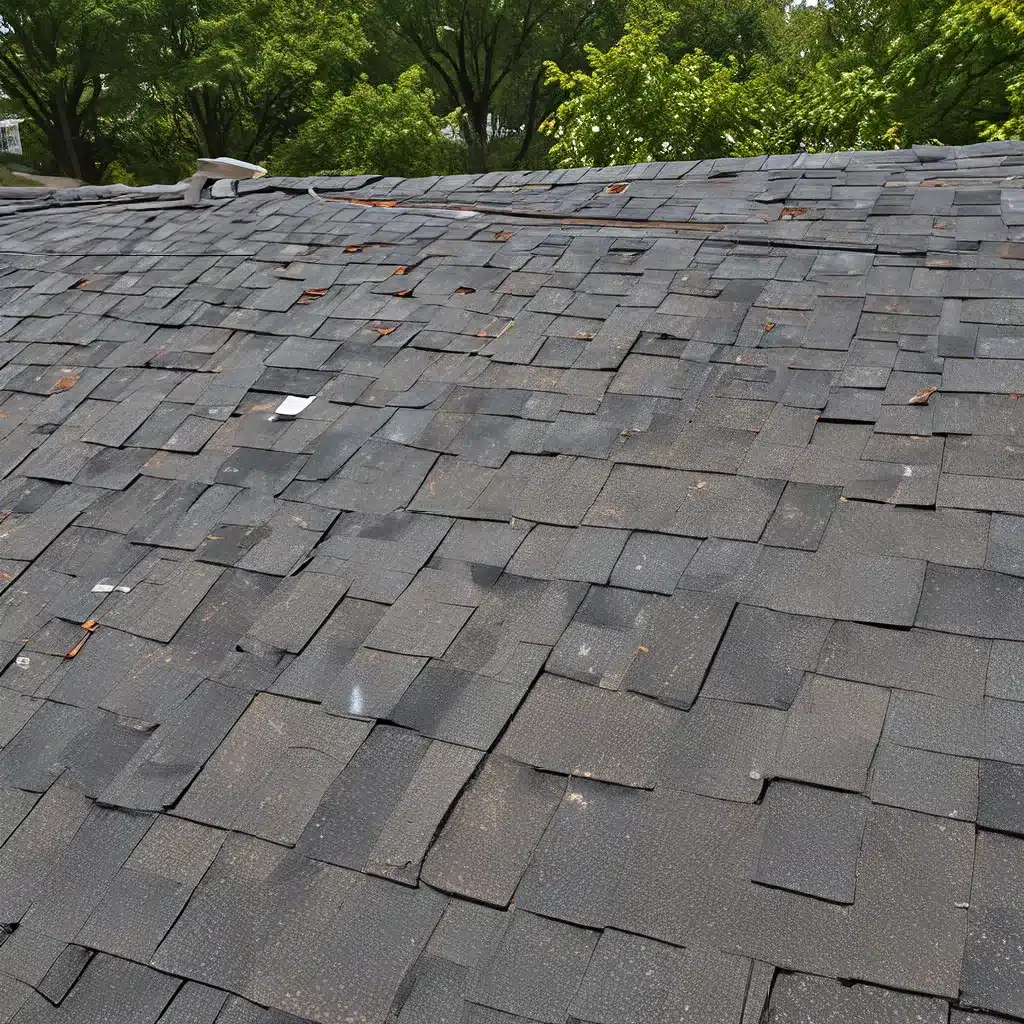
As a homeowner, few things can be as stressful as dealing with a damaged roof. Whether it’s a leaky shingle, a cracked tile, or storm-related destruction, the prospect of having to navigate the complex world of roof repair and replacement can be daunting. But fear not, my friends – I’m here to walk you through the process of optimizing your insurance coverage and ensuring you get the most bang for your buck when it comes to restoring your rooftop sanctuary.
Understanding Your Roof Insurance Coverage
Let’s start with the basics. Homeowner’s insurance typically covers roof repairs and replacements, but the specifics can vary widely from policy to policy. Some policies may only cover damage caused by specific events, like a fallen tree or hail storm, while others may have more comprehensive coverage. And then there’s the age-old question of deductibles – that pesky amount you have to pay out of pocket before your insurance kicks in.
As you delve into the fine print of your policy, pay close attention to the wording surrounding roof-related coverage. Terms like “actual cash value” and “replacement cost” can have a significant impact on how much you’ll be reimbursed. The former takes into account the age and depreciation of your roof, while the latter covers the full cost of a brand-new replacement. Needless to say, the replacement cost option is typically the more favorable choice.
Maximizing Your Roof Insurance Claim
Now that you’ve familiarized yourself with the ins and outs of your policy, it’s time to put that knowledge into action. When disaster strikes and you need to file a claim, documentation is key. Gather as much evidence as possible, including photos of the damage, repair estimates from reputable contractors, and any relevant paperwork.
Here’s a pro tip: don’t be afraid to shop around for contractors who can provide a detailed, itemized estimate. This can be a valuable bargaining chip when negotiating with your insurance company. After all, they’re in the business of minimizing payouts, so you’ll need to be a savvy advocate for your own interests.
Another important consideration is the timing of your claim. Depending on the nature of the damage, you may have a limited window to file before your policy’s coverage expires. Don’t wait until the last minute – act quickly to ensure you can get the repairs or replacement done in a timely manner.
Navigating the Roof Inspection Process
Once you’ve submitted your claim, the insurance company will typically send an adjuster to inspect your roof. This is where things can get a bit tricky, as adjusters may have a tendency to lowball their estimates or overlook certain types of damage.
To ensure you’re getting a fair shake, consider having your own inspector on hand during the assessment. This could be a trusted roofing contractor or even a public adjuster, who can advocate on your behalf and ensure that every last shingle is accounted for.
And here’s a little secret: don’t be afraid to push back if the insurance company’s offer seems too low. With the right documentation and a bit of negotiation savvy, you can often get them to reevaluate their initial assessment and increase their payout.
The Roof Replacement Conundrum
In some cases, the damage to your roof may be so extensive that a full replacement is the only viable option. This can be a daunting prospect, both financially and logistically. But fear not, my friends – there are ways to navigate this process with confidence.
First and foremost, make sure you understand the difference between the actual cash value and the replacement cost coverage. The former may leave you on the hook for a significant portion of the bill, while the latter should cover the full cost of a brand-new roof.
Southern Roofing Co. can be an invaluable resource during this process, providing expert guidance and ensuring that your insurance claim is handled with the utmost care and efficiency.
Attic Ventilation: A Crucial Consideration
As you navigate the world of roof repair and replacement, it’s important to consider the role of attic ventilation. Proper ventilation can not only extend the lifespan of your roof but also play a crucial role in energy efficiency and overall home comfort.
Studies have shown that inadequate attic ventilation can lead to a number of issues, including premature roof deterioration, ice dams, and even mold growth. So, as you work with your roofing contractor, make sure to discuss the importance of optimizing your attic ventilation as part of the overall project.
Staying Vigilant and Proactive
Remember, when it comes to your roof, an ounce of prevention is worth a pound of cure. Regularly inspecting your roof for signs of wear and tear, and addressing minor issues before they turn into major headaches, can save you a lot of time, money, and stress in the long run.
The U.S. government’s official website recommends that homeowners conduct a thorough roof inspection at least once a year, preferably in the spring or fall when the weather is more forgiving.
And don’t forget to keep an eye on your attic as well. Proper ventilation is crucial, and Maryland’s Department of Housing and Community Development can provide valuable guidance on how to ensure your attic is functioning at its best.
Embracing the Unexpected
Life is full of surprises, and your roof is no exception. While we can’t always predict when disaster will strike, we can take proactive steps to minimize the impact and ensure that we’re prepared when the time comes.
So, my friends, let’s embrace the unexpected and tackle this roofing challenge head-on. With the right knowledge, the right team, and a healthy dose of determination, I have no doubt that you’ll emerge from this experience with a stronger, more resilient roof and a newfound sense of confidence in your ability to navigate the complex world of home maintenance.